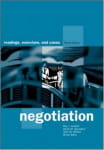International Forex Currency Risk Agreements (Part 1)

If you do business internationally, you’re likely to need to negotiate your currency exchange contract. Find out how the money market can affect your bottom line, and get familiar with your options.
My Currency or Yours?
Billions of Dollars, Euros, Yen, British Pounds and a multitude form of international currency whips around the world electronically every day, in a mind numbing blink of the eye. Every business person knows how easily a country’s currency can fluctuate and wobble wildly due to a variety of reasons. Currency traders can raise the value of a developing country’s currency to soaring heights one day, and bring it crashing down a week later. Many of these impacts result from international negotiations and agreements that are forged with foreign trading partners. So how are we to protect our investment in this perpetually changing and uncertain global climate?
Currency Challenges of Negotiated International Agreements
Any international agreement negotiated with a foreign business partner presents additional challenges when the negotiation involves international foreign currency contracts.
Relative Risks of Foreign Currencies – Movable Currency
The fluctuating worth of convertible foreign currency, as compared to our own currency, presents particular risks relative to the ratio of their comparative value. The value of any currency, as all business people are well aware, can shift dramatically due to a variety of reasons. Between the period the negotiated agreement is signed and payments are exchanged, one side may be receiving less money, or paying more than they anticipated.
Some foreign currencies of developing countries may have their value ‘pegged‘ to other foreign currencies, such as the Euro or Dollar for example. The reason they do so, is to avoid having their currency become dependent on the pressures of supply and demand, from the internal market conditions within their own economic system. If the value of that currency falls beyond a certain range, the country’s central bank may buy more of its currency to stabilize the value.
So how to best manage the risks and challenges posed by movable currencies?
Put the Onus of Risk on your Foreign Trading Partner
The first way to avoid the undulating currency risk during the negotiation, is to insist that your foreign partner make and receive payments in your currency. If you’ll pardon the pun, this ‘passes the buck‘ to your foreign counterparty. Without convention or significant negotiation power on our side, it can be tough to make this kind of demand in our negotiations without providing some logical justification to back it up. One logical reason to make this demand is that, if we are the ones who are incurring the larger portion of the costs, it would be only reasonable that our partner should be the ones to bear the risk.
Should our counterparty balk and the issue become a stumbling block to a successful negotiation, there is another route we can use to counter their protests. If they insist we transact in their currency, we might counter that the amount to be paid or received, be indexed or directly associated to the exchange rates between the two nations. So the proportion between currencies remains the same – reducing the risk of sharp exchange rate shifts. The purchasing power parity of currencies would work against the sustainability of this method in the face of a big exchange rate shift.
When We have to Incur the Risk
There will be occasions when we will have to bear the associated perils of our counterparty’s currency fluctuations. How can we safeguard ourselves should the agreement be dependent on this set of circumstances? One method is to approximate what the currency fluctuation could be at the time the agreement is concluded, then to change this figure to the actual rate at the time of signing the contract. This is however only a short term solution to a negotiation problem that is usually long term.
Hedging
A popular route for multi-national corporations to reduce their forex risk exposure is to pass it on. These are known as “hedges“. There are associated costs with “hedges” so advice should be sought from experienced financial experts. Hedges are usually handled by the finance department member of a negotiation team.
The first method of ‘hedging‘ consists of signing an agreement to buy a specified amount of the foreign trading partner’s currency, at a defined price and date in the “forward foreign exchange market“. This allows us to know exactly what we will be paying and receiving, on a specific date.
The second method of “hedging” is to acquire an option for the sale and purchase of the foreign currency for a “fixed price“, in the partner’s currency during a defined time period in the future. This might entail setting up a foreign currency account or purchasing foreign currency bonds.
The third technique is to arrange “offsetting transactions“, also referred to as “exposure netting“. Here, the risk or potential loss is counterbalanced in one business deal, by a gain in some other transaction. For example, a financial risk faced by a British company to pay in Indonesian Rupiah, to a foreign partner located in Bali later down the road, could be counterbalanced by a debt in Rupiah, owed to the British company payable by some other partner, on the same date in the future. This may be an example of a multi-party negotiated agreement.
Dividing the Risk
Negotiating parties can agree on a means of computation, so they are both able to share the risk.
One way a negotiated agreement can accomplish the risk sharing, is for one side to pay a percentage of the transaction in one currency and the balance in the other side’s foreign exchange. As the process is reciprocated in the buying and selling process, both sides assume a relatively equal risk. Where there is a great deal of potential fluctuation in one partner’s currency, this method can be strengthened by agreeing to only agree to a percentage agreement, so long as the fluctuating currency remains within a certain range. If the currency should fluctuate outside this range, then a pre-agreed formula comes into play to address the difference.
Another way to address foreign currency fluctuation is to allow for payment in an ‘artificial unit of account‘, which is an assortment of multiple currencies such as the IMF’s SDR (Special Drawing Right). As opposed to using specific currencies, the basket contains an assortment of currencies that offset each other in fluctuation because as one currency loses value, another currency gains value, so the losses are relatively balanced out.
Finally, the last means we can employ is to outline a clause in our negotiation contract, where we agree to re-negotiate the financial terms of the agreement, should the fluctuations occur outside a pre designated and agreed upon range. Decide before-hand whether you would want to renegotiate the entire contract, or just the currency component.
Conclusion
Every international negotiated agreement entails some risk in the exchange of foreign currency. There are a number of mechanisms and techniques to offset the risks of fluctuating currency. Although these prescriptions cannot guarantee we won’t encounter some loss, there is much we can do to minimize our exposure.
Part 2 of this article deals with Negotiating Foreign Currency Exchange Agreements.
Jeswald W. Salacuse, ‘The Global Negotiator’ Palgrave MacMillan, (2003).
YOU MAY ALSO LIKE





Really good site! Very Helpful